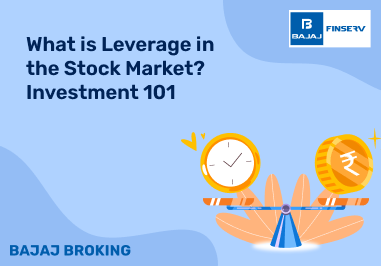The bear put spread is a strategic options trading approach designed to capitalize on a moderate decline in an asset's price while managing risk. It involves purchasing a put option at a higher strike price and selling another put option at a lower strike price, both with the same expiration date. This strategy is beneficial for traders who anticipate a limited downward movement in the market.
By employing a bear put spread, traders can limit their potential losses to the net premium paid, making it a cost-effective strategy compared to buying a put option outright. However, the profit potential is also capped, making it less suitable for traders expecting significant price drops.
What Is a Bear Put Spread?
A bear put spread is an options strategy that combines two put options with different strike prices to profit from a bearish market outlook. It involves buying a put option with a higher strike price and selling a put option with a lower strike price. This setup allows traders to benefit from a moderate decline in the asset's price while limiting potential losses.
The bear put spread strategy is particularly useful for traders who expect a limited downward movement in the market. It offers a balance between risk management and potential returns, making it a popular choice among traders seeking to hedge against moderate price declines. The strategy's effectiveness depends on precise market timing and understanding of the underlying asset's price movements.
The Basics of a Bear Put Spread
A Bear Put Spread strategy is an options trading approach designed to take advantage of a controlled drop in the asset’s market price while limiting potential losses.
- Buying a Put Option: In this strategy, an investor purchases a put option with a higher strike price. This grants the right to sell the underlying asset at that predetermined price, serving as the primary bearish component of the strategy.
- Selling a Put Option: Simultaneously, the investor sells a put option with a lower strike price. This obligates the investor to buy the underlying asset at the lower strike price if the option is exercised, effectively offsetting part of the cost of the purchased put option.
- Net Premium: The net premium is the difference between the premium paid for the higher strike put option and the premium received from selling the lower strike put option. This net premium represents the initial investment and defines the maximum potential loss of the Bear Put Spread.
- Maximum Profit: The strategy yields its highest return when the underlying trades below the lower strike at expiration. It is derived by taking the difference in strike prices and deducting the premium paid for the spread.
- Maximum Loss: At most, the trader stands to lose the net premium invested in the strategy. This loss materialises when the asset’s price stays above the higher strike at expiry, resulting in both options expiring worthless.
- Bear Put Spread Payoff: The payoff of a Bear Put Spread is limited and occurs when the underlying asset's price declines. The strategy profits as the asset's price decreases, but the profit is capped at the difference between the strike prices minus the net premium.
Advantages and Disadvantages of a Bear Put Spread
The bear put spread strategy offers defined risk and return, making it suitable for moderately bearish market expectations.
Advantages
- Limited Downside Risk: The maximum potential loss is restricted to the net premium paid at the time of initiating the trade. This clearly defined risk makes it easier for traders to manage capital efficiently.
- Lower Capital Requirement: Compared to buying a single put option, the bear put spread lowers the upfront cost. The premium received from the sold put helps offset the premium paid.
- Defined Profit Potential: The strategy has a capped profit range, helping traders plan outcomes and risk-reward ratios in advance.
- Suitable for Mild Bearish Views: The strategy works well in moderately bearish markets without the need for sharp price declines.
- Lower Sensitivity to Volatility: Since two legs are involved, exposure to time decay and implied volatility changes is reduced.
Disadvantages
- Capped Profit Potential: The maximum profit is limited to the difference between the strike prices minus the net premium paid, which may not suit traders anticipating a sharp decline.
- Requires Precise Market View: The strategy benefits only when the price drops moderately. If the underlying remains range-bound or rises, the setup may lead to a loss.
- Complexity Over a Single Put: Though still relatively simple, executing two simultaneous positions makes this more complex than buying a standalone put option.
- Not Ideal for Highly Volatile Markets: In extreme market swings, the limited profit may not justify the risk or opportunity cost.
- Break-even Range is Narrow: The strategy achieves profitability only within a specific price window, limiting flexibility in uncertain conditions.
Example of Bear Put Spread
The bear put spread is a popular option trading strategy for profiting from a moderate price decline. It involves buying a put option at a higher strike price and selling one at a lower strike. For example:
- Buy a put option at ₹55 for ₹4.
- Sell a put option at ₹45 for ₹2.
- Net Premium: ₹2.
- Maximum Profit: ₹8 if the stock falls below ₹45.
- Maximum Loss: ₹2 if it stays above ₹55. This option buying strategy combined with option selling strategy is a useful strategy for option trading when anticipating moderate declines.
Net Premium Paid
The difference between premiums paid and received; this defines the initial strategy cost.
Maximum Profit
Achieved when the underlying price falls below the lower strike at expiry.
Maximum Loss
Occurs if the asset stays above the higher strike price till expiry.
Bear Put Spread Payoff
Capped return potential that increases as the asset price declines, within defined limits.
Conclusion
The bear put spread is a versatile option trading strategy that allows traders to profit from a moderate decline in an asset's price while managing risk effectively. It involves buying a put option at a higher strike price and selling a put option at a lower strike price, both with the same expiration date. This strategy is particularly useful for traders who expect a limited downward movement in the market.
By employing a bear put spread, traders can limit their potential losses to the net premium paid, making it a cost-effective approach compared to buying a put option outright. However, the profit potential is also capped, making it less suitable for traders expecting significant price drops. This strategy fits well into best option trading strategies for managing risk and is a best strategy for option trading when anticipating moderate declines.















